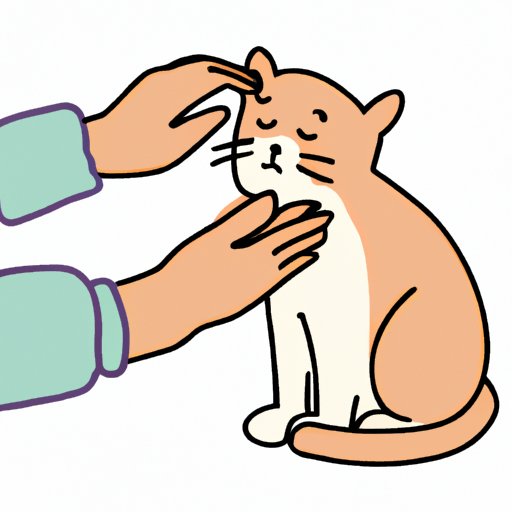Introduction
Touch starvation is a condition where a person feels deprived of physical contact. This lack of physical connection can lead to feelings of loneliness and isolation, as well as an increased risk of depression and anxiety. Fortunately, there are many ways to cope with touch starvation. In this article, we’ll explore some effective strategies for managing touch deprivation, such as spending time with pets or animals, reaching out to friends and family, practicing self-care routines, volunteering, and seeking professional help.
Spend Time with Pets or Animals
One of the best ways to cope with touch starvation is to spend time with pets or animals. Animals provide unconditional love and companionship, which can help reduce feelings of loneliness and isolation. Here are a few ideas to get started:
Cuddle a pet. If you have a pet at home, cuddling them can be an excellent way to get the physical contact you need. Not only that, but it can also be a great source of comfort and stress relief.
Go for a walk in nature. Taking a peaceful stroll in nature can be incredibly calming and soothing. Plus, if you keep your eyes peeled, you may even spot some wildlife along the way.
Visit a local animal shelter. Visiting a local animal shelter can be a great way to connect with animals and get some much-needed physical contact. Many shelters offer volunteer opportunities, so you can make a meaningful contribution too.

Reach Out to Friends and Family
Another way to cope with touch starvation is to reach out to friends and family. Building strong relationships with people can help reduce feelings of loneliness and isolation, while also providing a sense of support and security. Here are a few tips to get started:
Connecting with people. Make an effort to reach out to people in your life. Whether it’s a phone call, text message, or email, take the time to cultivate meaningful connections with people you care about.
Giving and receiving non-physical affection. Even if you can’t give or receive physical affection, there are still plenty of other ways to show your love and appreciation. A kind word, a hug, or even just a smile can go a long way.
Practice Self-Care Routines
It’s also important to practice self-care when dealing with touch starvation. Taking care of yourself is essential for managing stress, reducing anxiety, and improving your overall wellbeing. Here are a few ideas to get started:
Take a hot bath. Taking a hot bath is a great way to relax and unwind. Add a few drops of essential oils, light some candles, and enjoy a moment of peace and tranquility.
Create a cozy space. Creating a cozy space in your home can be a great way to provide yourself with some much-needed comfort and security. Fill it with items that bring you joy, such as plants, books, art, and photographs.
Practice yoga or mindfulness exercises. Yoga and mindfulness exercises can help reduce stress and promote relaxation. Try to carve out a few minutes each day to focus on your breath and be present in the moment.
Volunteer
Volunteering is another great way to cope with touch starvation. Not only does it provide an opportunity to connect with others, but it can also be a great way to make a meaningful contribution to your community. Here are a few tips to get started:
Connecting with others. Volunteering can be a great way to meet new people and build relationships. Look for volunteer opportunities in your area, such as helping out at a local food bank or animal shelter.
Making a meaningful contribution to your community. When you volunteer, you’re not only helping yourself, but you’re also making a positive impact on your community. Think of it as a way to give back and make a difference.
Seek Professional Help
Finally, if you’re struggling to cope with touch starvation, it’s important to seek professional help. Seeing a mental health professional can be beneficial in many ways, from providing support and guidance to helping you develop healthy coping strategies. If you’re feeling overwhelmed, don’t hesitate to reach out for help.
Conclusion
Touch starvation is a real condition that can have serious effects on mental health. Fortunately, there are many strategies for coping with this condition, such as spending time with pets or animals, reaching out to friends and family, practicing self-care routines, volunteering, and seeking professional help. With the right strategies, it is possible to manage touch starvation and find comfort and connection.
Remember, you don’t have to go through this alone. Reach out to those around you and don’t be afraid to ask for help. With the right support, you can get through this difficult time.
(Note: Is this article not meeting your expectations? Do you have knowledge or insights to share? Unlock new opportunities and expand your reach by joining our authors team. Click Registration to join us and share your expertise with our readers.)
